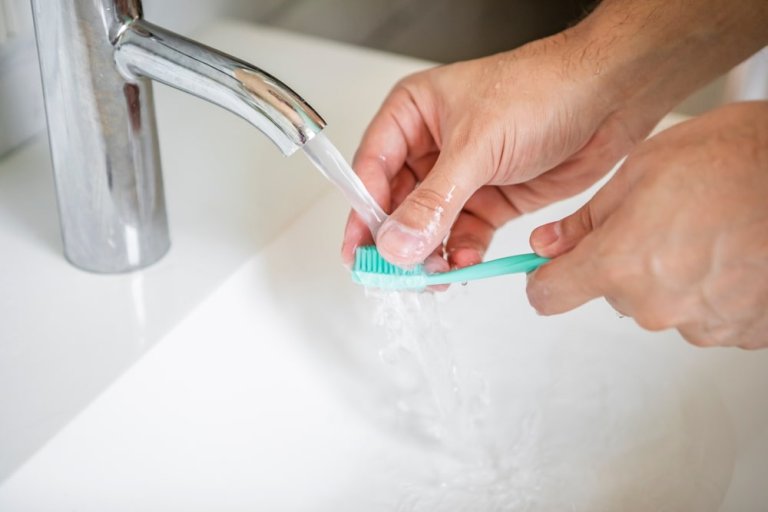How Do I Clean my Toothbrush?
Just the other day, as I was aimlessly wandering through Amazon on my phone, I fell down the rabbit hole of dental products. I came across toothbrush sanitizers and saw several models and systems touting their virtues and offering peace of mind to consumers that their toothbrushes are sterile or as clean as possible.
Bacteria & Viruses on Our Toothbrushes
Coincidentally, I read an article this week in a BBC publication about the magnitude of bacteria that set up residence in our toothbrushes.
I was so frustrated when I read this article.
I spend countless hours during my patient hours stressing the importance of brushing and flossing to keep dental disease under control.
This article serves to scare people away from using their brush and could work at odds with good dental hygiene.
The article stated that our toothbrushes are home to millions of bacteria, fungi, and viruses that set up residence on our brushes. We feed these organisms every time we brush with water, saliva, food bits, and even blood if our gums bleed.
Surfaces & Environment Are Factors
In the horror days of COVID, we were not sure whether viruses could survive on hard surfaces. We walked around with spray disinfectant and gloves out of caution that we would contract the virus.
Science was confused, and instead of offering guidance based on facts, it added to our doubts and paranoia as it dealt with a new phenomenon.
Many of us thought that living organisms wouldn’t survive on a non-living surface for an extended period, and this notion was challenged.
Not only is the surface a factor, but the environment is important as well. We know that life in a desert is limited by excessive heat and a lack of moisture. Just the opposite is true in a warm, not hot, moist environment.
What is a better way to describe our bathrooms as we crave a nice steamy shower or bath? The walls may drip with humidity as evidence of our success in creating our personal saunas.
Our toothbrushes live in this ecosystem and allow organisms, such as viruses, to travel through the moist air. These viruses can find their way to our toothbrushes, which enjoy the same environment.
Like many research papers, its impact on our daily lives may be minimal. I have never heard of someone contracting a serious illness from their bathroom toothbrush.
That said, there are steps to take to limit the spread of germs and their effects.
Common Sense Ways to Clean A Toothbrush
1. Rinse With Hot Water
Rinse the bristles thoroughly with hot water before and after each brushing to remove any residual food particles and toothpaste. Finish with a cold water rinse to help the bristles firm up.
2. Dry Your Brush
The best way to reduce the number of organisms is to store your brushes vertically and let them air-dry. Removing excess moisture by patting them dry with a tissue is a good idea too, as it lets air flow and dries them out more quickly.
3. Store Them Properly
Don’t lay your brushes down in a dark drawer, and most importantly, you don’t have to go out and buy a special disinfectant device. Common sense wins in this area.
4. Replace Your Brush Monthly
To maximize your brush’s efficiency, I recommend replacing it at least once a month.
This approach will keep it in the best possible condition and allow you to discard any bacteria, viruses, or other living organisms that may be breeding on your brush.
A fresh brush cleans best, and after all, isn’t that what toothbrushing is all about?
I’m Here to Help
If you have any questions about teeth or oral hygiene, please feel free to call me.
I am always happy to talk to you over the phone or in person. I can be reached at 440.951.7856 and look forward to speaking with you.
Jeffrey Gross, DDS, FAGD, is an Ohio-licensed general dentist and is on the staff of Case Western Reserve School of Dental Medicine.

